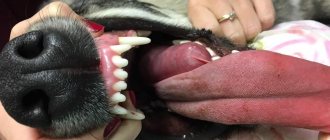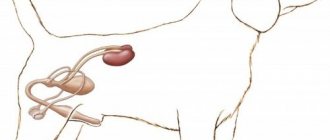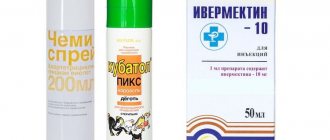Symptoms of turtle diseases
Although each disease has characteristic signs, there are universal symptoms of turtle disease, thanks to which you can determine that the reptile has health problems:
- Decreased appetite or complete refusal to eat.
- Swollen eyes.
- Pus around the eyes.
- Noisy rapid breathing.
- Mucus near the nose or mouth.
- Change in the color of the throat, the appearance of plaque.
- Damage to the shell.
- The appearance of spots on the body and shell.
- Apathetic state.
If you notice any of these symptoms, you should immediately contact your veterinarian. After all, these signs can signal both a common cold and a deadly disease.
Detachment of horny plates
This trouble is not a disease, but rather a consequence of various reasons. Some doctors consider this phenomenon as a symptom.
In normal condition, turtles' shells do not peel off and molting does not occur. But during the period of growth of the horny plates, this phenomenon occurs quite often. In adulthood, this can occur due to a lack of vitamins A and B2, improper content, the appearance of fungus or the influence of harmful algae.
In other situations, you should act accordingly:
- The shield is increased in size and extends only from the middle. This problem can be solved with increased feeding and vitamin replenishment. There is no harm in adding methylene blue to the water.
- The shield is divided into layers, inside it there are entire cavities. In the place where the shield was, a gray coating or brown crust remains. This is a consequence of the activity of the fungus. To get rid of it, you need to completely clean the aquarium, place the turtle separately and soak it in oak bark tincture. In addition to this, you need to add methylene blue to the main water. In any situation, treatment should last 2 weeks.
- The scutes come off only in a specific place, a softening of the healthy scutes is felt around, and an ulcer or blood remains at the place where they are located. This is a bacterial disease. In this situation, bluing will again come to the rescue, as well as clotrimazole ointment, and a complex of antifungal drugs. The turtle should be left in a dry place at night. It's better to consult a veterinarian.
The most common diseases of turtles
Otitis
Otitis is an inflammation of the ears. This disease most often affects aquatic species (for example, red-eared turtles). Otitis media in turtles is caused by the following reasons:
- Improper care is the most common reason. This is understood as a rare change of water, due to which bacteria multiply there, poor nutrition, lack of control of the temperature of the water or cage (too low) where the animal is kept.
- Injuries.
- Fungus or mite.
- Avitaminosis of turtles.
Otitis media in red-eared turtles develops rapidly, and therefore it is important not to miss the first signs of the disease:
- Swelling around the ears.
- Swelling on the limbs.
- The animal constantly tries to scratch its ear with its paw.
To cure otitis media in an animal, surgery is often necessary. Only the mildest forms of the disease can be managed with drug therapy. After the operation, it is necessary to treat the tumor site for a week with special medications, which will be individually prescribed by the veterinarian.
Common diseases
Symptoms and treatment for red-eared sliders when the disease occurs differ from each other. Each diagnosis has its own. Conventionally, 5 main groups of diseases can be distinguished:
- Diseases of bones and shell. Lack of vitamins and minerals, especially calcium, provokes these problems.
- Respiratory diseases. The most common and dangerous of them is pneumonia.
- Intestinal infections and the presence of helminths.
- Diseases of the hearing organs. Turtles suffer from otitis media.
- Fungal and bacterial skin diseases.
Timely treatment of any of these diseases can save your pet's life.
Rickets and pneumonia
Problems with shell delamination and softening and bone diseases are caused by a lack of minerals and ultraviolet rays. Proper lighting of the terrarium plays an important role. Symptoms of rickets include:
- changes in the structure and shape of bones;
- thickenings on the paws;
- the turtle moves little;
- exfoliation of keratinized shell particles with subsequent softening.
If you notice such symptoms, you should consult your doctor. When prescribing treatment, he will select the appropriate complex of vitamins and minerals, and, if necessary, conduct additional therapy.
To prevent and treat rickets, you need to take care of additional lighting of the terrarium and adding the necessary minerals to the diet.
You can independently add fish to the diet by grinding it along with the bones, and install an ultraviolet lamp. Sunbathing is beneficial for your turtle from time to time.
Pneumonia that goes undetected in time can kill an animal in a short period of time. Its occurrence is caused by hypothermia of the reptile or stagnation of water in the terrarium. Symptoms:
- swollen eyes;
- open mouth and nasal mucus;
- clumsy ascent to the surface of the water in a lateral position;
- loss of appetite and low mobility.
Intestinal infections
They occur when the body is colonized by helminths, bacteria and viruses. Warning symptoms include:
- lethargy;
- inactivity;
- lack of appetite;
- weight loss;
- sometimes foaming at the mouth;
- diarrhea.
If you have any intestinal diseases, you should consult a veterinarian.
Intestinal diseases cannot be treated on your own. Procedures in a clinical setting are required.
Skin problems
Some of them are quite dangerous. Diseases can be divided according to the causes of their occurrence:
- various suppurations (secondary infection) as a result of injuries and damage to the skin;
- fungal and bacterial infection;
- metabolic disorders, including vitamin deficiencies and hypervitaminosis.
The slightest injury can lead to infection entering through the wound surface. Ulcers and boils may appear on the skin. In some cases, not only treatment is required, but also surgery.
Plaque on the shell or detachment of plates may indicate a fungal disease in the red-eared turtle
Fungal infections develop into dermatomycosis. Most often they are associated with a fungus that causes a disease called saprolegniosis in aquarium fish. The fungus thrives in water contaminated with food residues and other organic matter. Its branched threads enter the skin, penetrate into it and cause inflammatory processes (even necrosis). Signs of fungal infection include:
- grayish-white coating on the skin and shell;
- detachment of horny plates;
- the formation of cavities and bubbles in the thickness of the shell.
Bathing the turtle in a solution of potassium permanganate will help cope with the fungal disease at the initial stage.
On the part of the owner, monitoring the maintenance of the turtle in clean water can be a real help. Having noticed the disease at an early stage - plaque on the skin and shell, you can try the following measures:
- Bathe your pet in a disinfectant solution. Take 1 g of manganese per liter of water, which is pre-dissolved in a small amount of water (about 100 ml). The procedure lasts 15 minutes and is repeated for 2-3 days.
- After bathing, lubricate the affected areas with antifungal drugs: Canesten, Parkesterone or Panolog.
With proper treatment, the signs of the disease should disappear after the specified time.
Disruption of metabolic processes is expressed in peeling and rashes on the skin, dermatitis and detachments of shell scales. A deficiency or excess of vitamins and minerals will be determined by a veterinarian. Treatment is prescribed comprehensively.
We suggest you read: Broiler diseases and their treatment at home
Eye lesions
The inflammatory process can be either an independent disease or a concomitant symptom of another disease. The main causes of eye damage include:
- water pollution in the terrarium;
- the presence of streptococci or staphylococci in the water;
- complications of diseases such as pneumonia, rickets or metabolic disorders, including vitamin deficiencies.
Swollen eyes in a red-eared turtle may indicate the development of conjunctivitis.
One of the common independent eye diseases is conjunctivitis. Its symptoms:
- swollen eyelids;
- redness of the eyes;
- purulent discharge;
- lethargy and poor appetite;
- The turtle constantly rubs its eyes with its paws.
When neglected, the eyelids can stick together and remain closed.
In the initial stages, conjunctivitis is treated with drops that the doctor will select. For progressive disease, antibiotic ointments are used. Wrong time or poorly carried out (independent) treatment can lead to eye damage and complete blindness.
Red-eared turtles do not have an external ear, so the inflammatory process immediately begins inside the ear canal. Its reasons may be:
- hypothermia;
- infections;
- metabolic disease;
- incorrect content.
With age, the risk of otitis in red-eared turtles increases.
Recognizing otitis is not too difficult. You need to pay attention to the following signs:
- swelling in the ear area;
- increased attention of the turtle to its ears - it rubs them with its paws;
- when swimming, the animal takes a lateral position.
The older the turtle, the more likely otitis media is to occur. When treating, it is impossible to do without a specialist, especially at the purulent stage. Often, surgical removal of the plug or abscess or abscess that has arisen is required, followed by treatment.
Prevention of any diseases of these cute turtles requires careful attention to them, proper maintenance and feeding. And then they will delight their owners for many years.
Stomach diseases of the pet turtle
Flatulence
Flatulence can occur in any turtle. It is caused by a malnutrition of the animal (too high sugar content in the diet). Symptoms:
- Bloating (may lead to shortness of breath).
- Constipation.
- Apathy.
- Swelling in the stomach area.
Treatment is carried out at home using suspensions that are given to the animal (a suspension made from activated carbon is suitable). The turtles’ diet is also adjusted – fruits and bread are excluded. Vegetables and greens that contain fiber are added to the diet.
Feeding the turtle
For the normal development of a turtle, a varied diet is needed, including fresh vegetables (lettuce, cucumbers, cabbage, tomatoes, carrots, pumpkin), greens (dandelion, plantain, coltsfoot). At the same time, we must not forget that the turtle loves most - fruits (watermelon, melon, apple) and berries (strawberries, raspberries, cherries).
She is not averse to dining on cooled semolina or buckwheat porridge, and will also not refuse oatmeal prepared in the traditional way.
To prevent her from getting sick from a lack of nutrients, cottage cheese, boiled eggs, and raw minced meat should be added to the main diet. At the same time, there is no need to give her something to drink, since she gets most of her liquid from vegetables and fruits, and besides, she can drink while taking a bath.
The diet of an aquatic turtle is mainly meat and fish, but it will not refuse snails, worms, mice, etc. But this does not mean that she should not be given food of plant origin. It should be at least 30% in the diet of an aquatic turtle.
Turtle diseases associated with vitamin deficiency
Lack of vitamin D and calcium
Calcium and vitamin D are essential for turtles at any age. With the help of these elements, the animal’s body better tolerates infections and receives additional protection. The reason for the lack of calcium and vitamin D in the body is an improper and unbalanced diet.
Symptoms:
- In young individuals, the shell does not harden well.
- In turtles, the shell may be soft after one year.
- In older animals, the shell suddenly becomes lighter.
Treatment should be carried out only after diagnosis by a specialist. This often includes taking special vitamins and adjusting your diet.
11. Turtle diseases and their treatment
- Viral infections
- External parasites
- Rectal prolapse
- Helminths
- Constipation
- Conjunctivitis
- Necrosis of the shell
- Fractures
- Injuries
- Burns
- Nonspecific bacterial pneumonia
- Swollen eyes
- Armor osteomyelitis
- Panophthalmitis
- Salmonellosis
- Ulcerative stomatitis
- Rhinitis and rhinopathy
- Abscesses
- Cloacite
- Septic-ulcerative disease
- Turtle diseases caused by algae
- Metabolic disorders due to poor nutrition
- Osteoporosis
- Maladaptation syndrome
- Delayed egg laying
- Ulcerative dissecting disease of the shell
- Mycobacterial infection
- Non-infectious gastroenteritis
- Sepsis
- Invasive diseases of turtles
- Peeling skin
- Ticks
- Pneumonia
- Softening the shell of aquatic turtles
- Impaired movement coordination
- Mycosis
With proper care and optimal conditions, turtles can live for quite a long time without getting sick. Newly caught animals, weakened as a result of long travel and climate change, are most susceptible to various diseases. Diseases can be caused by poor nutrition, injuries, temperature disturbances, and contact with sick animals.
Turtles quite often become infected with viral diseases. The main signs of viral diseases are lack of appetite, decreased activity, runny nose and conjunctivitis. With severe damage, necrotic changes appear in the lung tissue and trachea.
It is worth noting that all viral diseases are very dangerous and often result in death for turtles, therefore, at the first signs of illness in a pet, it should be shown to a veterinarian, who, having made a diagnosis, will prescribe a course of treatment and the necessary feeding regimen for the turtle.
The bodies of freshwater turtles are often parasitized by leeches, which can be removed by cauterization. After this procedure, the place where the leech was attached must be treated with an antiseptic.
If after some time foci of inflammation appear in those parts of the turtle’s body where leeches have parasitized, the pet should be shown to a veterinarian. Various parasites often settle in the folds of the skin of land turtles. To check whether there are any parasitic insects on the animal’s body, you need to turn it upside down and lightly shake it over a piece of white paper or oilcloth. If parasites are detected, you must immediately take your pet to a veterinarian.
The cause of rectal prolapse may be sand swallowed by the turtle, which damages the intestinal mucosa. In males, the genital organ can also fall out: it is quite simple to set it back if the turtle did not have serious injuries that led to this. The causes of rectal prolapse can be constipation or enteritis.
To reduce it into the cloaca, you first need to inject a little SupronalR using a pipette, then return the organ to its place with a finger or some blunt object, apply a cotton swab and cover it with the turtle’s tail on top. After this, the tail is fixed, attached to the shell with adhesive tape, and a little Vaseline oil is administered orally to the turtle. After a few days, the adhesive tape is removed. You need to monitor for some time to see if the turtle has problems with bowel movements.
Rectal prolapse occurs in turtles that have been living at home for a long time, whose diet consists of food poor in vitamins.
Most turtles caught in the wild are infected with worms. They are not very dangerous for humans, but in animals they can cause various diseases, including constipation.
In order to determine whether a turtle has worms, you need to put it in a warm bath, which stimulates the intestines, and check the animal's excrement for the presence of worms and their eggs.
If worms are found during the check, you need to carry out the treatment prescribed by your doctor.
You can rid your pet of some types of worms yourself by using chopped raw carrots, which should be fed to the turtle for several days. No other food should be given during this period. If treatment with carrots does not help, you need to use special medications.
The causes of constipation can be different. Most often they occur after the turtle swallows foreign bodies, as a result of stagnation of intestinal contents due to worms. To relieve constipation, you can use warm baths and enemas with Vaseline oil.
This is one of the most common diseases in turtles. With conjunctivitis, the eyelids and conjunctival sacs become inflamed. The cause of the disease is streptococci and staphylococci.
Treatment of conjunctivitis is carried out using ointments containing tetracycline and chloramphenicol. If the disease is advanced, it is treated with antibiotic ointments and antibiotics taken orally.
When the shell is mechanically damaged, pathogens of various infectious diseases can penetrate into the resulting cracks and wounds, causing separation of the shields of the shell, and then spreading to the bones under the shell. You can save the turtle only by removing the damaged scutes. Wounds should be treated with BetaisodonaR solution, and then antibacterial and antifungal ointments should be applied to them daily.
Aquatic turtles should be kept on land during treatment. Only necrosis in the initial stage can be treated.
Occasionally, turtles experience fractures during periods of greatest activity. For open fractures, treatment is carried out as follows: splints and screw clamps are used. When closed, they rely on the internal resources of the body.
It should be remembered that the healing process for a reptile will take much longer than, say, a human. Within 10 days after bone surgery, turtles are administered subcutaneous antibiotics.
SHELL FRACTURES
Fractures of the shell are associated with the formation of cracks in the stratum corneum. Treatment begins with cleaning the gap, after which the horny and bone layers are drilled on both sides of it and pulled together with wire. The wire is removed after 3–4 months.
LIMB FRACTURES
A splint is placed on the injured limb and left for 2–3 months.
JAW FRACTURES
When treating a bilateral mandibular fracture, plates are used in each branch of the jaw, since fixation with pins is insufficient.
Turtles, like any other reptile, are susceptible to various injuries.
Turtles receive very serious injuries during mating when the male bites the female, forcing her to stop.
Treatment of injuries to turtles depends on their size, nature and the possibilities of using certain means. For example, in the recent past, turtles that suffered massive shell injuries had to be euthanized. Recently, many materials based on polymers with a rapid effect have appeared, allowing not only successful treatment, but also the subsequent production of offspring from injured turtles.
Some minor reptile injuries can be treated on your own; more serious injuries require veterinary intervention. At home, treatment of injuries begins with surgical treatment with any antiseptic, for example, Septonex aerosol. After this, the wound surface is covered with BF-6 surgical glue.
If the insulation of heating devices is poor or the electrical wiring in a home terrarium is faulty, turtles may suffer burns. According to severity, burns are divided into four groups.
I degree. Redness and peeling of the epithelium is observed.
II degree. Blisters appear and fluid accumulates under the stratum corneum.
III degree. In turn, it is divided into:
1) IIIa – skin necrosis without damage to the basal layer;
2) IIIb – necrosis of the skin with damage to the basal layer.
IV degree. Necrosis of all layers of skin and underlying tissues is observed. After healing, scars remain on the surface of the skin, and some parts of the body are deformed.
First degree burns require virtually no treatment. For burns of second degree or more, the burn surface is treated with a cloth soaked in a 70% solution of ethyl alcohol, removing dead tissue.
The bubbles are opened, their upper part is carefully cut off. Then the wounds are successively covered with a 5% aqueous solution of tannin and a 10% solution of silver nitrate. As a result of these manipulations, a crust forms on the surface of the wound, which eventually comes off on its own.
Suppuration of the burn surface is treated in the same way as a regular abscess.
Symptoms of bacterial pneumonia in turtles include breathing noises. Animals with pneumonia behave unusually and assume an unnatural position. If nonspecific bacterial pneumonia is detected in an animal, the temperature in the terrarium should be increased to 30–35 °C, and the sick animal should be protected from drafts.
Treatment is carried out with broad-spectrum antibiotics. If an animal refuses food for a long time during treatment, it must be fed artificially.
The eyes of turtles swell most often due to a lack of vitamin A in food; in addition, in aquatic turtles, the swelling can be caused by dirty water in a terrarium or aquarium.
If a disease is detected, the turtle should wash its eyes 2 times a day with a 3% solution of boric acid in distilled water. To prevent this disease, the water in the aquarium must be changed regularly, and foods containing vitamin A must be added to the turtle's food.
Osteomyelitis occurs most often in aquatic turtles and occurs due to bacterial damage to the bony areas of the shell. The disease often manifests itself as a consequence of shell injuries.
The first symptoms of osteomyelitis are pinkish spots with a rough surface that appear on the shell. Then, if the disease is not treated, the surface layer of the shell dies, and yellowish areas appear on it.
With further development of osteomyelitis, bone necrosis can spread throughout the entire shell and even affect internal organs.
This disease is treated with chloramphenicol or an aminoglycoside. The dosage should be calculated depending on the weight of the animal. The medicine should be administered subcutaneously.
To protect a turtle from osteomyelitis, it is necessary to remove from the terrarium all hard or sharp objects that could injure the shell, and isolate the pet from crustaceans susceptible to this disease.
Panophthalmitis, a bacterial inflammation of the membranes of the eye, mainly affects aquatic turtles, most often red-eared turtles. The disease occurs due to the penetration of pathogenic bacteria from the oral cavity under the cornea of the eye through the lacrimal canal. At the initial stage, only the lower eyelid is affected, and slight clouding of the pupil appears.
If the disease is not treated, the turtle may go blind. Ointments containing antibiotics are widely used to treat panophthalmitis.
Salmonellosis is caused by salmonella - coli-shaped bacteria that are dangerous not only for animals, but also for people, especially children, because they produce toxins that can cause typhoid fever or paratyphoid fever.
Turtles can not only suffer from salmonellosis, but also be carriers of salmonella, which usually does not manifest itself in any way. Therefore, it is necessary to observe the rules of hygiene when in contact with turtles and under no circumstances allow children to press turtles to their faces or kiss them. Symptoms of salmonellosis in turtles manifest themselves as follows: first, liquid, foamy diarrhea of a greenish color is observed, characterized by an extremely unpleasant odor, then the animal refuses food and becomes apathetic.
Salmonellosis in freshwater turtles can be transmitted through eggs: hatchlings hatched from eggs laid by an affected female are carriers of Salmonella immediately after birth.
In the early stages of the disease, it is possible to treat with chloramphenicol in the form of a suspension (50–75 mg per 1 kg), which is administered through a tube 2–3 times a day with an interval of two days. If no improvement is observed, it is best to euthanize the animal.
Ulcerative stomatitis occurs in marine and freshwater turtles. This disease is treated with tetracycline.
A disease of the mucous membrane without inflammation is called rhinopathy, with inflammation - rhinitis. The causes of rhinopathy are:
– mechanical injuries to the mucous membrane of the nasal passages, if expanded clay or other materials were used as soil;
– lack of vitamin A in the animal’s diet;
- hypothermia. Signs of the disease are similar to those of pneumonia.
If it is not possible to make an accurate diagnosis, treatment is carried out as follows: a single injection of vitamin A not more than 100 thousand IU; washing the nasal passages with a catheter or syringe with a diameter smaller than the diameter of the animal’s nostril. A syringe or catheter is inserted shallowly into the nostril, then closed tightly with a finger to prevent fluid from leaking out. After this, by sharply pressing the syringe plunger, the nasal passage is washed with any antiseptic solution, which should then pour out of the animal’s mouth. The second nasal passage is washed in the same way. These measures, which help get rid of the signs of rhinopathy, can only provide short-term improvement in bacterial rhinitis, and will not help at all in bacterial pneumonia.
Bacterial rhinitis is treated in the same way as bacterial pneumonia.
Abscesses - limited foci of purulent inflammation - appear as a result of injuries to the skin about soil particles with sharp edges, cracks in glass, etc. Most often, abscesses are located subcutaneously, sometimes in internal organs. In this case, it is impossible to detect them yourself.
The main sign of subcutaneous abscesses is swelling, initially dense, then softened.
Surgical treatment: an incision is made at the location of the abscess to drain the pus, then the area of the abscess is washed with an antiseptic solution, such as hydrogen peroxide. At first, the wound is treated daily by introducing narrow, loose strips of bandage moistened with an antiseptic.
After the discharge of pus from the wound stops, chymopsin or trypsin is poured into it, which promotes the resorption of dead tissue. In severe cases, treatment is accompanied by antibiotics in the same doses as for pneumonia.
Abscess in turtles
A fairly common disease in turtles is cloacal prolapse, or cloacitis. It can manifest itself as an independent disease or be part of another infectious disease, such as salmonellosis. The clinical picture of common cloacitis is divided into two stages.
At the first stage, dried excrement adhered to the perianal shields is noted; there is a small amount of pus or blood in the feces. At this stage of the disease, the animal continues to eat well.
The second stage is accompanied by retention of feces. The animal stops eating, but still looks healthy.
Treatment is carried out in the same way as for stomatitis, but periodically the turtle is given enemas until normal bowel movements are restored.
Septic ulcer disease is caused by bacteria of the genus Beneckea chitinovora, which enter the turtle’s body through tiny breaks in the skin. Bacteria invade red blood cells, penetrate all organs and form ulcers on the surface of the skin. Clinical signs of the disease:
– decreased activity and muscle tone;
– erasing the gingival margin and claws;
– paralysis of limbs;
– ulceration of the skin against the background of hemorrhages and dilated vessels.
If no measures are taken, the animal will inevitably die. Treatment is carried out using chloramphenicol succinate or chloramphenicol, administered intramuscularly to the turtle.
Ulcers are treated with an aerosol preparation called levovinisol, which contains chloramphenicol and vinylin.
The shell of many turtles is covered with algae on top, which in natural conditions is an excellent camouflage, but when kept in captivity, this symbiosis sometimes leads to the development of disease.
It is assumed that the main cause of the disease is water heavily contaminated with food debris, which promotes the growth of algae.
This, in turn, leads to delamination of the shell scutes in turtles, sometimes to the complete loss of the surface layer.
Treatment of the disease: treatment of the affected shell with Lugol's solution or 1% copper sulfate. As a means of prevention, it is recommended to follow sanitary and hygienic rules for keeping turtles.
Inexperienced turtle owners often make mistakes when caring for their pets. Ignorance of the rules for keeping turtles at home and failure to comply with nutritional standards lead to the development of diseases of the gastrointestinal tract and metabolic disorders.
Usually these are hypovitaminosis - a deficiency in the body of one or another vitamin; less common are avitaminosis - a complete absence of any vitamin in the body. In this case, the animal may die as a result of complications of any disease due to hypovitaminosis.
Hypervitaminosis, which develops as a result of exceeding the dosage of vitamin preparations, is quite rare.
Among hypovitaminosis, hypovitaminosis of vitamins A, C, D and group B are usually found.
In addition, non-compliance with nutritional norms and rules leads to the occurrence of diseases due to an imbalance or lack of certain minerals, most often calcium, iodine and phosphorus.
HYPOVITAMINOSIS A
Lack of vitamin A in an animal’s body occurs when there is a lack of carotene in the diet, the main sources of which are eggs, carrots, liver and milk.
Deformation of the upper jaw due to hypovitaminosis D
A lack of vitamin A in the body leads to dryness, clouding and softening of the cornea, severe swelling of the eyes, and impaired retinal function.
Treatment of the disease involves introducing into the diet of turtles foods rich in vitamin A and carotene, as well as retinol acetate (60-100 thousand IU, depending on the weight of the animal).
HYPOVITAMINOSIS D
Hypovitaminosis D occurs when there is a lack of vitamin D in the diet and its natural synthesis in the body is disrupted under the influence of ultraviolet rays, which leads to rickets. With rickets, disorders of phosphorus-calcium metabolism, protein and carbohydrate metabolism develop.
The clinical sign of the disease in rickets is a change in the shape of the shell and jaws. In the early stage, the shell is soft, easily pressed with fingers, and over time it acquires an irregular, so-called tower shape. The lower jaw softens, the jaw edges are worn away, and the claws are bent. The upper jaw takes the shape of a beak.
Deformation of the shell due to hypovitaminosis D
Deformation of claws due to hypovitaminosis D
Treatment of the disease consists of the following measures:
– diet;
– pharmacotherapy;
– irradiation with ultraviolet rays.
To irradiate animals, quartz lamps of the OKN-11 or Medicor type are used. Irradiation is carried out year-round, once a week, at a distance of 1 m, or daily in courses of 5-10 sessions, at the same distance, with intervals between courses of 20 days.
As dietary measures, products containing vitamin D and minerals are introduced into the diet of turtles: fish oil, yeast, eggshells, bone meal, etc.
If vitamin D in the form of Urzovit is added to water, it must be changed every 3-4 days.
For injections, use “Tetravit” or “Laptovet” in normal doses. These drugs are administered weekly until symptoms of disease progression completely disappear, after which maintenance doses are continued. To reduce the risk of developing hypervitaminosis D, vitamin A is administered along with vitamin D3 preparations in a ratio of 1: 5. HYPOVITAMINOSIS B
With hypovitaminosis B, the body of turtles usually lacks several vitamins of this group at once. The most common causes of hypovitaminosis B include:
– lack of green and live food;
– use of fresh fish without preliminary heat treatment as the main feed;
– dysbacteriosis due to the use of antibiotics.
Signs of vitamin B deficiency in an animal’s body:
– growth slowdown;
– loss of appetite;
– gastrointestinal disorders;
– spasm of the masticatory muscles;
– convulsions and increased tone of the extensor muscles of the hind limbs.
When treating hypovitaminosis B, live and green food, cottage cheese, liver, etc. are introduced into the diet of turtles, as well as vitamins directly: B1 in the form of a solution in a dose of 2 to 10 mg per kilogram of animal weight (every other day), B12 in microdoses every other day. day for two weeks.
During the period of spasm of the chewing muscles, turtles are fed artificially.
HYPOVITAMINOSIS E
This disease, caused by a lack of vitamin E in the body of turtles, is considered one of the most common among other forms of hypovitaminosis.
Clinical signs of hypovitaminosis E:
1. Focal changes in subcutaneous tissue and muscles.
2. Impaired coordination of movements.
3. Paralysis of limbs.
4. Refusal of food. Treatment consists of administering vitamin E to the animal in any acceptable form 3 times within 1 week in an amount of 50-800 IU, depending on the weight of the turtle. However, tocopherol acetate is considered toxic to all reptiles in general, and an overdose can lead to severe liver damage.
Osteoporosis is a protein deficiency syndrome that develops due to many reasons, such as an overly long beak. With this disease, deformation of the vertebral body quite often occurs. As a treatment for osteoporosis, it is recommended to include a sufficient amount of protein in the diet, as well as give oral vitamins and calcium.
Most turtles, due to insufficient adaptability to new living conditions, experience dysfunction of the gastrointestinal tract. Some reasons for this are known, others remain unclear to this day. It has been noticed that such violations appear:
– after hibernation;
– after long-term transportation;
– if the necessary conditions of captivity are not observed.
If the body is dehydrated and refuses food for a long time, glucose and electrolyte solutions are given orally or administered subcutaneously.
If all the above factors are present, it is recommended to carry out basic therapy: oral administration of an anthelmintic with simultaneous infusion of cattle blood serum using a probe (2 ml per 100 g of animal weight).
Pay special attention to keeping the pet: raise the temperature in the room to 29 °C, adjust the humidity depending on the type of turtle. Carry out daily warm rinsing of the cloaca, which helps stabilize the digestive tract.
Those animals that, despite the measures taken, continue to refuse food, are prescribed furosemide (10 mg per kilogram of animal weight); To break down uric acid in the body, allopurinol is given orally (25 mg per kilogram of animal weight) until complete recovery.
This disease is often fatal. Interestingly, even old females kept alone for several years are susceptible to it. Causes of the disease: – the need for calcium, necessary for the formation of egg shells, which is not replenished by the food received;
– development of vitamin D3 deficiency;
– poor sliding of eggs in the oviduct;
– abnormalities of eggs;
– air temperature is too low;
– unsuitable soil. Signs of the disease:
anxiety, refusal to feed, lethargy, swelling in the neck and limbs, respiratory dysfunction (12 breaths per minute when the norm is 4 breaths, mouth wide open). Eggs in the oviduct remain viable for four weeks.
To confirm the diagnosis, the turtle should be held in an upright position with its head up to displace the internal organs: it is often possible to feel the eggs with a finger in the cutouts of the shell in front of the hind limbs.
If egg laying is delayed, oxytocin is administered once simultaneously with calcium at a dose of 50 mg/kg. The female is placed in her usual terrarium, turning off the lights and heating the water in the pool to 30 °C. A large egg, located in front of the entrance to the pelvis, is pierced with a long needle, and the contents of the egg are sucked out.
Ulcerative dissecting disease of the shell is a contagious disease that can take a chronic course. The disease begins with a primary infection of the plastron by a fungus of the genus Candida albicans, after which the bacteria Aeromonas hydropholya invade the animal’s body. An important role in this is played by all sorts of small wounds or cracks on the shell. As a result, ulcers covered with whitish films appear on the plastron and carapace.
As the disease progresses, the number of ulcers and their size increase.
Treatment is carried out with chloramphenical or chloramphenicol succinate, administered intramuscularly.
To prevent disease, all newly acquired turtles are quarantined for at least 2 weeks. Freshwater crustaceans, which are also susceptible to this disease, should not be kept in the same aquarium with turtles.
With this disease in turtles, the lungs are most often affected, while damage to the internal organs does not have characteristic clinical manifestations. Treatment of reptiles in this case is not possible, so it is more advisable to pay attention to prevention, that is, creating optimal living conditions. There is a known experience when cubs from the same clutch were divided into two groups, the first of which was kept in good conditions. The juveniles of both groups were fed the decay products of animals with tuberculosis. Under normal conditions, the reptiles remained healthy.
Among all other diseases, non-infectious gastroenteritis occupies one of the leading places, second only to hypovitaminosis.
Gastroenteritis - inflammatory diseases of the stomach and small intestine - are divided into acute and chronic. Acute gastroenteritis occurs in stressful situations, with poisoning and temperatures below the level necessary for digesting food. Causes of chronic gastroenteritis:
– malnutrition;
– stressful situations.
If the turtle has become lethargic and does not respond to external stimuli, the animal must be shown to a veterinarian.
But any other long-term illness can provoke gastroenteritis. The side effects of some medications also lead to the same result: for example, after one course of antibiotics, regurgitation may occur during the first feeding as one of the manifestations of the disease. This symptom is considered characteristic of gastroenteritis.
Chronic gastroenteritis is divided into two forms - with increased and decreased secretory activity. With gastroenteritis with increased secretory activity, regurgitation appears on the 1st-3rd day after eating, with decreased secretory activity - at a later date.
Treatment of gastroenteritis begins with normalization of living conditions, administration of medications and diet. During treatment, turtles are switched to plant foods as they are the most digestible and rich in vitamins.
For chronic gastroenteritis with increased secretory function, Vikair, Vikalin, Almagel are used from drugs; with reduced secretory activity - abomin, pancreatin, festal.
B-complex is also used at a dosage of 0.8 ml/kg 1-2 times a week. To improve the regeneration processes of the gastric epithelium, animals are given rosehip or sea buckthorn oil.
Before giving any medications to a sick turtle, it is necessary to consult a veterinarian, since only he can make the correct diagnosis and prescribe the necessary course of drug treatment for your pet.
Sepsis is one of the most serious diseases of reptiles, resulting from the spread of infection through the bloodstream throughout the body. Sepsis appears as a consequence of another disease - stomatitis, pneumonia, infected wound. A characteristic sign of sepsis in reptiles is pinpoint hemorrhages on the skin and mucous membranes.
If, in addition to turtles, there are other reptiles in the terrarium, there is a possibility of the turtles becoming infected with viral infections.
There are three forms of sepsis:
1. The acute form is most common in young animals. It manifests itself in decreased activity, convulsions due to damage to the central nervous system, leading to death 24 hours after the onset of the disease.
2. Septic pneumonia has all the signs of ordinary pneumonia. Without treatment, turtles die already on the 5-6th day after the onset of the disease.
3. Chroniosepsis most often occurs in adult reptiles and manifests itself in the form of sluggish stomatitis in combination with respiratory disorders. Lack of treatment leads to the death of the animal in the 5-6th week of the disease. Treatment is carried out with the use of antibiotics, and repeated changes of drugs are required.
Basic methods for preventing sepsis:
– optimal conditions of detention;
- balanced diet;
– timely treatment of other diseases.
The blood of freshwater turtles is parasitized by protozoa of the genera Schellackia, Lankesterella, Haemogregarina, Hepatozoon, Karyolysus, Plasmodium, Haemoproteus, Babesiosoma and Dactylosoma. They require ticks and leeches as intermediate hosts. Also, most species have amoebiasis, caused by parasites of the genus Entamoeba invadens.
To prevent diseases in turtles in the terrarium, it is necessary to periodically disinfect. In addition, pet food can only be purchased in specialized stores.
They have a direct development cycle and parasitize the intestines and liver.
As a result of laboratory studies, other protozoa were identified:
– larvae of Dioctophyma renale;
– pulmonary nematodes;
– fuscovenosa and Rhabdias spp;
– cestodes;
– acanthocephals;
– trematodes that parasitize the oral cavity, esophagus, lungs, intestines and kidneys.
The skin of some species of land turtles is parasitized by mites of the species Ophionyssus natricis, which are also intermediate hosts of other protozoa.
Peeling of the skin in turtles can be a clinical sign of various diseases, for example, a consequence of mechanical damage or one of the signs of an infectious skin lesion. Most often, peeling of the skin is caused by a deficiency of vitamin A and B vitamins (B2, B6, B12).
Sometimes peeling is observed with hypervitaminosis resulting from an overdose of vitamin preparations. To determine an accurate diagnosis and prescribe treatment, consultation with a specialist is required.
The cause of most diseases of aquatic turtles is non-compliance with the conditions of detention: untreated water, lack of heat and light, poor diet.
Ticks can be found in folds of skin at the base of the tail, around the neck, and near the eyes and mouth.
Treatment is as follows:
– lubricate the affected area of the reptile’s body with olive oil. The layer of oil will block the tick’s access to air, and it will fall off on its own;
– to remove invisible ticks you need to use a solution of Stomazan or Neostomazan. Before use, the drug is diluted with water in a ratio of 1: 200, then the soft parts of the turtle’s body are lubricated with it. After a few hours, the reptile should be gently wiped with a soft cloth;
– it is recommended to place the pet in warm water (30°C) for 10–12 hours; The water level in the aquarium should be such that the animal can breathe with its head out of the water. The edges of the aquarium should be coated with a layer of oil or Vaseline to prevent parasites from spreading.
After treatment, the turtle must be rinsed with warm water.
With this disease, animals experience a severe runny nose. Due to disruption of the lungs, air accumulates in them, and the turtle cannot dive. Without timely treatment, reptiles die in about two weeks. Treatment: intramuscular injections of ampicillin for 7-10 days (50 mg of the drug per kilogram of animal weight) or chloramphenicol in the same dose.
If the condition worsens, injections of gentamicin sulfate (10 mg/kg) for 10 days are usually recommended.
In most aquatic turtles, if the conditions are not met, the shell becomes soft. The cause of this disease is often a lack of vitamin D. Treatment: introducing foods with a high content of vitamin D and calcium into the turtle’s diet (chalk, eggshells, bone meal, etc.). Calphos is also recommended to restore the calcium-phosphorus balance.
The cause of this disease is vitamin E deficiency, which often occurs when turtles are fed fatty sea fish. Animals experience impaired coordination of movements, refusal to feed, and paralysis of the limbs.
Treatment: introducing vitamin E into the turtle’s diet 1-3 times every 7-9 days at a dose of 80-100 IU, depending on the size of the animal.
With this disease, the limbs, head and neck are covered with a white cotton wool-like coating.
Treatment: treatment of the affected areas with a 1% solution of potassium permanganate for 3–4 days.
Table of contents
Disease Prevention
Turtles have virtually no congenital diseases. And that’s why almost all diseases come from improper care. In order for the animal to have good health and not get sick, it is enough to comply with all maintenance standards and undergo an examination by a veterinarian once a year.
All turtles need for good health and a long life is proper care and attention from the owner. But, nevertheless, it is important to listen to your pet in order to recognize the symptoms of dangerous diseases in time and take the necessary measures. In this case, the turtle will repay the owner with its health and longevity.
Features of keeping aquatic turtles
A terrarium for marsh and aquatic turtles should be approximately 130 cm long, 70 cm wide and 70 cm high. The water part should be about 2/3 of the area of the terrarium, its depth should be 40-60 cm. The shore of the pool should be flat, as in natural conditions, so that animals can easily get out of the water. Concrete surfaces in the terrarium should not be too rough, as many turtles, at least when young, have a soft abdominal shield.
While some species (such as snapping turtles) do not do well in open water and seek to hide among roots or overhanging vegetation, other turtles, such as the snapping turtle, require a lot of space to swim. For three-clawed turtles, it is necessary to use sand or pebbles as bottom soil in the pool. For all other turtle species, the composition of the bottom soil does not matter; The main thing is not to create unnecessary problems for cleaning the pool.
Aquatic red-eared turtle
The water must be filtered through a relatively large filter. Turtles pollute the pool a lot, so the filter pump must be powerful. Compared to the pump in a regular aquarium, the power of the pump in a turtle tank should be three times greater. If, for example, the water volume in a turtle tank is 250 liters, the filter and pump should be selected for 750 liters. However, even with constant filtration, it is necessary to change the water at least once every 10-14 days. A filter, even a fairly powerful one, cannot purify water from waste products that dissolve in water as a result of metabolic processes in the body, such as nitrates and nitrites. These substances in high concentrations are poisonous and can cause many diseases of internal organs, which are recognized primarily by changes in the eyes.
Optimal water and air temperatures for aquatic turtles
It is best if the air temperature and water temperature are approximately equal. If the air temperature is significantly lower than the water temperature, turtles may catch a cold when they leave the water. All marsh and water turtles are most active at a water temperature of 25-30°C.
Not only European marsh turtles, but also many North American species, such as the ornate turtles often found in terrariums, hibernate. Ornamented turtles kept in artificial conditions, once they reach a length of 10 cm, can (and even should) hibernate in winter. Like land turtles, swamp turtles should be stopped feeding a week before they go to sleep. Then the animals are placed in a pool in which the temperature is slowly reduced by 8-10°C. In small pools it is necessary to partially replace used water with fresh water at the same temperature.
Kidney failure
Aquatic turtles can sometimes suffer from such an unpleasant disease as kidney failure. This disease can be caused by improper conditions of detention, namely:
- If the turtle is in an aquarium with a very low temperature for a long time;
- Improper diet – consumption of increased amounts of meat, bread and other unhealthy foods;
- Dehydration of the reptile's body. This can happen when keeping a pet under a radiator.
This pathological process can also be triggered by other factors:
- disorder of phosphorus and calcium metabolism;
- the presence of various infectious lesions in the cloaca and urinary tract;
- the use of toxic drugs that have a negative effect on kidney function;
- increased or decreased levels of vitamin A.
What symptoms will help determine the presence of the disease:
- when examining urine, the presence of salts is not detected in it;
- a sharp decrease in body weight;
- the turtle has a poor appetite and may refuse to eat;
- softening of bones, shell;
- in rare cases, vomiting is observed;
- swelling of the neck and limbs;
- eyes may become very swollen;
- presence of a sharp unpleasant odor of urine and feces;
- problems with urination;
- the presence of fluid secretions under the shell; in case of complications, blood may be present.
Important! If the above signs are detected, you should not treat your pet at home. It is recommended to immediately visit a doctor so that he can conduct the necessary examination and prescribe treatment.
Ulcerative dermatitis in a turtle
Treatment of wounds on a turtle
The skin of these reptiles is distinguished by its density and high resistance to mechanical damage. However, if “gates” form on the skin - burns, cuts, open wounds - infection and even fungal spores can penetrate through them. As a result of such lesions, ulcerative dermatitis appears on the skin. To treat such a disease, it is necessary to first clean the turtle’s skin, free it from pus, and cover the wounds themselves with antiviral ointment. It is recommended to use such products based on fish oil - they are more effective, and their cost is affordable.
Parasites in the gastrointestinal tract
Turtles are often found to have various parasites that affect the digestive system. Worms can be found in individuals of different ages. Typically, round and tapeworms enter the body of an amphibian animal along with food.
If your pet has worms, the following signs will indicate this:
- abnormal stool. Sometimes worms may be found in the stool;
- rapid loss of body weight;
- the reptile experiences complete apathy, it can be passive, constantly sleep or sit in one place;
- sunken eyes.
If suddenly the above signs are found in a reptile, then it will be possible to say for sure that it has worms. But to establish a diagnosis, it is better to take stool tests and visit a veterinarian. In these cases, constant medical supervision is required.
Worms can be eliminated quickly in the earliest stages of infection. But it is worth considering that the more advanced the disease, the more difficult it will be to cure.
Quarantine for purchased turtles
Before placing all purchased reptiles in a terrarium, quarantine measures must be carried out in order to identify symptoms of possible diseases, take measures to treat them and prevent the spread of infections.
Turtles are quarantined in a separate terrarium. The duration of isolation is determined individually for each specific animal. Most diseases of turtles do not always have clearly defined clinical signs, so it is recommended to keep animals in quarantine for at least 2–3 months.
Only after this, if the pet looks healthy in appearance and is eating well, can you transfer it to a regular terrarium.
Tympany of the stomach
This disease is observed in aquatic reptiles, such as red-eared turtles. The cause is high food consumption and lack of calcium. Symptoms include:
- The pet always swims on its right side.
- The feces may contain undigested pieces of food.
- Vomit.
- Lethargy and refusal to eat.
If the red-eared turtle does not eat, is lethargic and constantly sleeps, then treatment is carried out only by a veterinarian. If the pet is active and does not refuse food, then you can treat it yourself. To do this you need the following tools:
- Eleovit is used in a dose of 0.6 ml per 1 kg of weight.
- Espumisan for children at the rate of 1 ml of product for the same amount of water, 2 ml per 1 kg of weight is used.
- Veterinary calcium borgluconate 20%. Apply 1 ml per 1 kg of weight. Used once every 2 days, 5-7 times a day
How to give an injection is already known, so there should be no difficulties with therapy.
Reproduction
For successful reproduction in captivity, you will need to purchase a pair of Central Asian turtles of the same age and approximately equal weight. The female differs from the male in the shape of the tail. The male has a longer and wider tail at the base, and the female Central Asian tortoise is characterized by a dent located on the plastron, near the tail. Males are also distinguished from females by the cloaca located further along the tail.
Land turtles mate between February and August, immediately after emerging from their natural state of hibernation. The duration of gestation by the female is a couple of months, after which the pet lays from two to six eggs. The process of incubation of eggs lasts two months and is carried out at a temperature of 28-30°C. Newborn turtles that have just hatched from eggs have a shell about 2.5 cm long .
This is interesting! Low incubation temperatures cause the birth of a large number of males, and at high temperatures, females are most often born.
How to determine the age of a Central Asian turtle?
It is the Central Asian turtle that can be called a classic representative of the family of land turtles. Since childhood, we have seen such turtles on the pages of our favorite books - with a rounded, low shell of an olive-reddish color with dark spots. The dorsal shield or carpax is divided into 13 horny scutes, and the ventral plastron into 16. On the side of the carpax there are another 25 small scutes, and there are grooves on the central 13 plates. It is by their number that you can easily determine the age of the turtle that is in front of you.
Dermatitis and fungus
Mycotic fungus is often observed in aquatic turtles. The main factor of this disease is non-compliance with the conditions of detention, namely low temperature in the aquarium, rare changes of water, poor drying.
Signs:
- manifestation of peeling and peeling of the skin in folds;
- pimples and swelling may form on the surface of the skin;
- the reptile has a feeling of itching, so it scratches the skin vigorously until there are red spots;
- peeling of particles is observed on the shell;
- formation of a large number of ulcers.
In these cases, it is recommended to undergo examination. A veterinarian will take tests and accurately determine the type of fungal infection. Based on the data obtained, he can prescribe treatment using the following means:
- Baytril;
- Betadine. For 14 days, the reptile needs to be bathed for 30-40 minutes in water with a small addition of this product;
- Methylene blue. This product is added to the aquarium;
- Lamisil;
- Nizoral;
- Solcoseryl;
- adding essential vitamins to the diet;
- ultraviolet irradiation.
Whatever disease your reptile develops, you should immediately visit a veterinarian. You should not immediately engage in independent treatment without establishing a diagnosis, because this can greatly harm your pet’s health. A specialist will be able to not only identify the disease, but also prescribe effective treatment therapy.
Underdevelopment of the shell (rickets)
The cause is vitamin D deficiency, which is caused by insufficient calcium and UV radiation (sunlight).
How do I recognize rickets?
The shell is soft to the touch and easily deformed.
Bumps on the shell.
Nutrition should be filled with vitamins and minerals. In addition, your veterinarian may prescribe vitamin injections. Please consult a specialist to select the necessary treatment.
The likelihood of recovery is high, however, relapses are not excluded.










